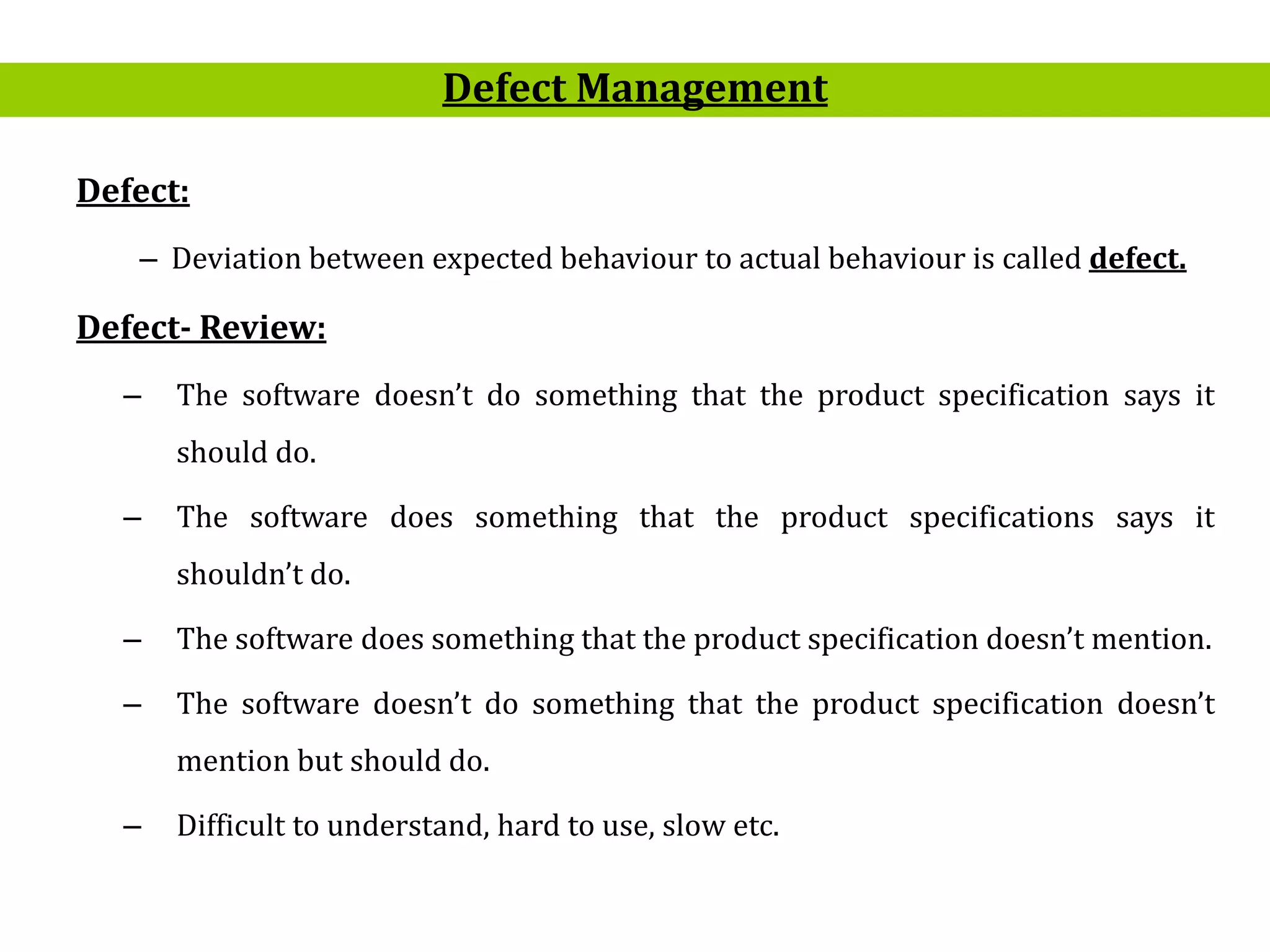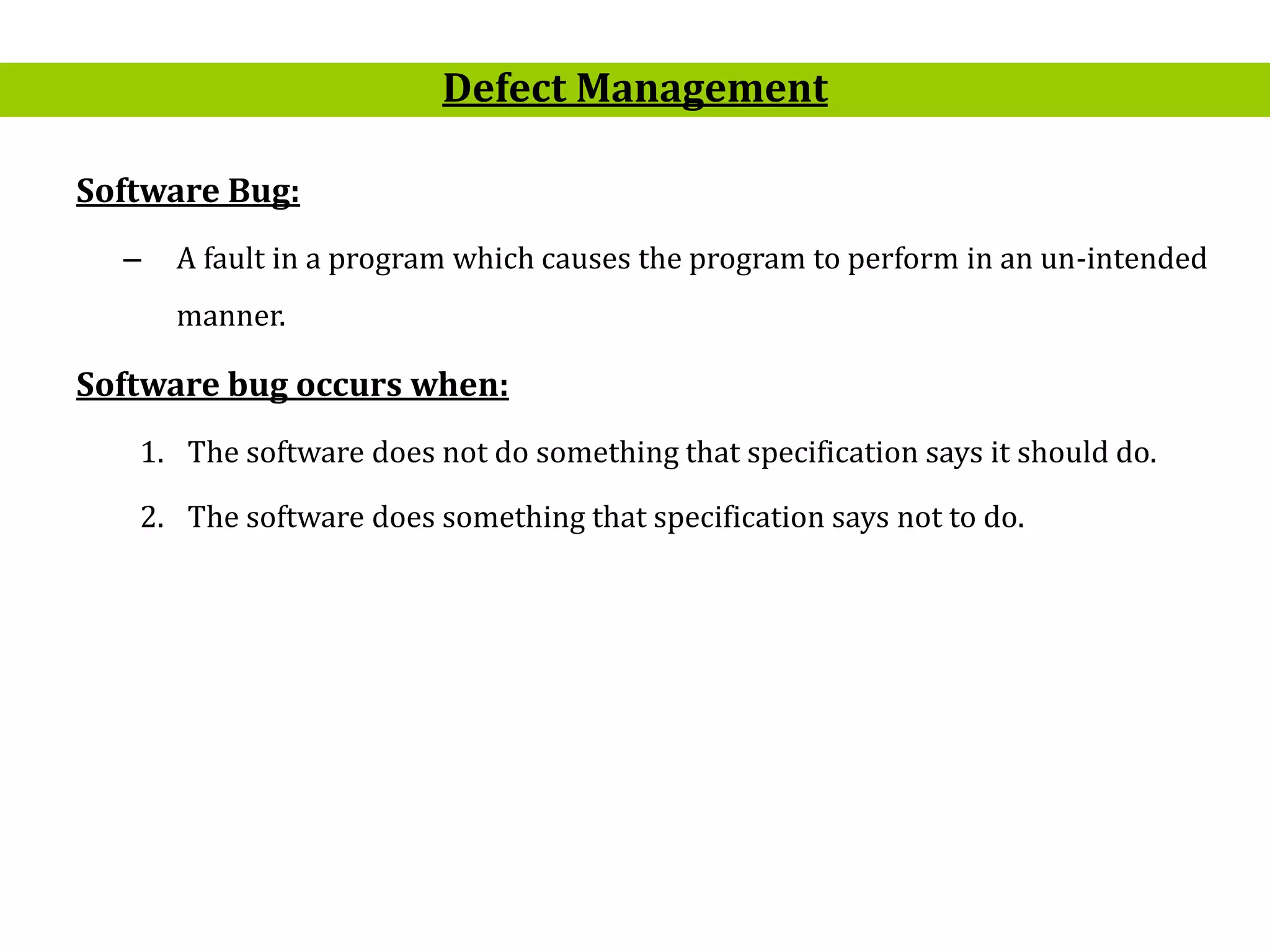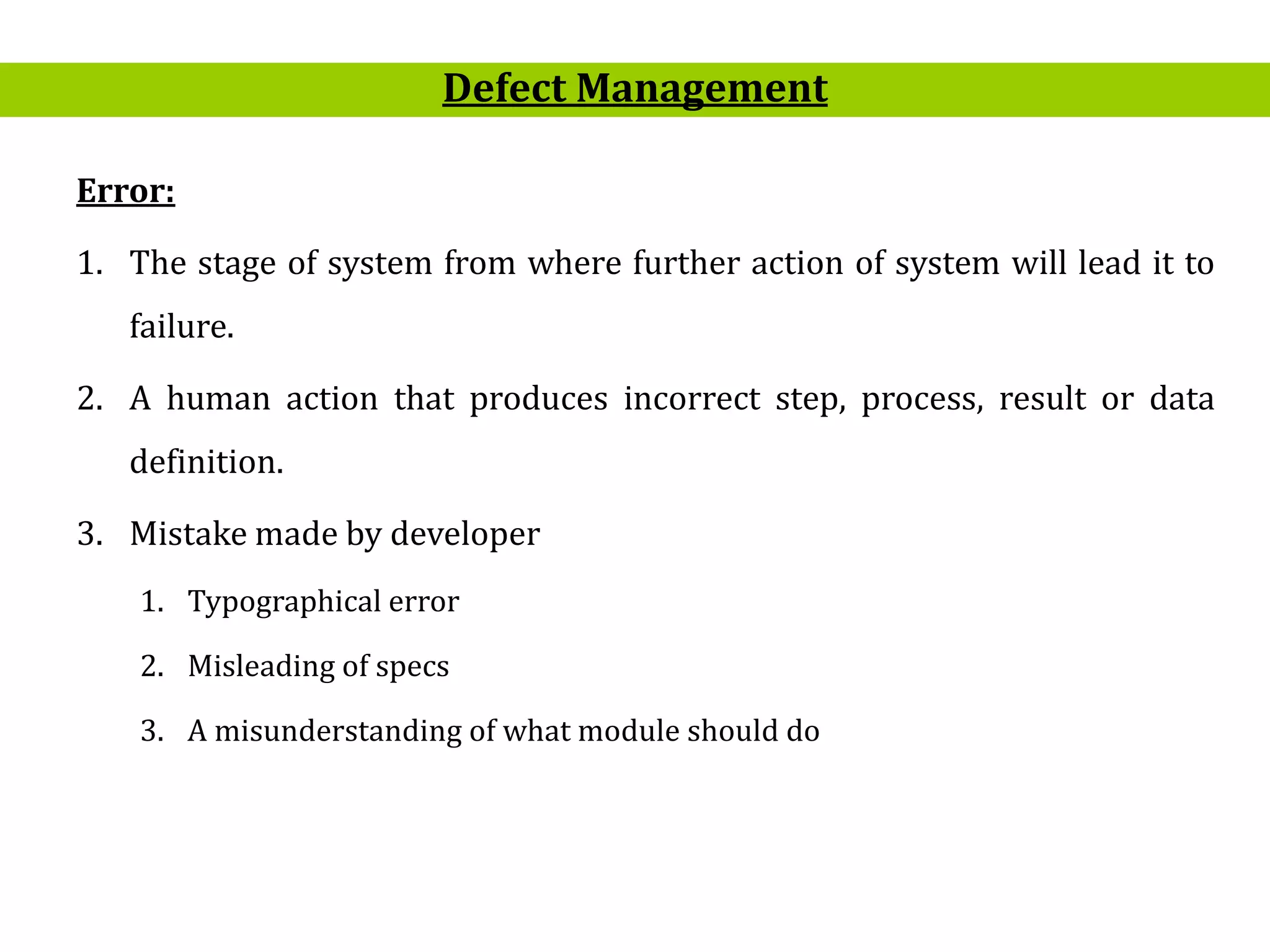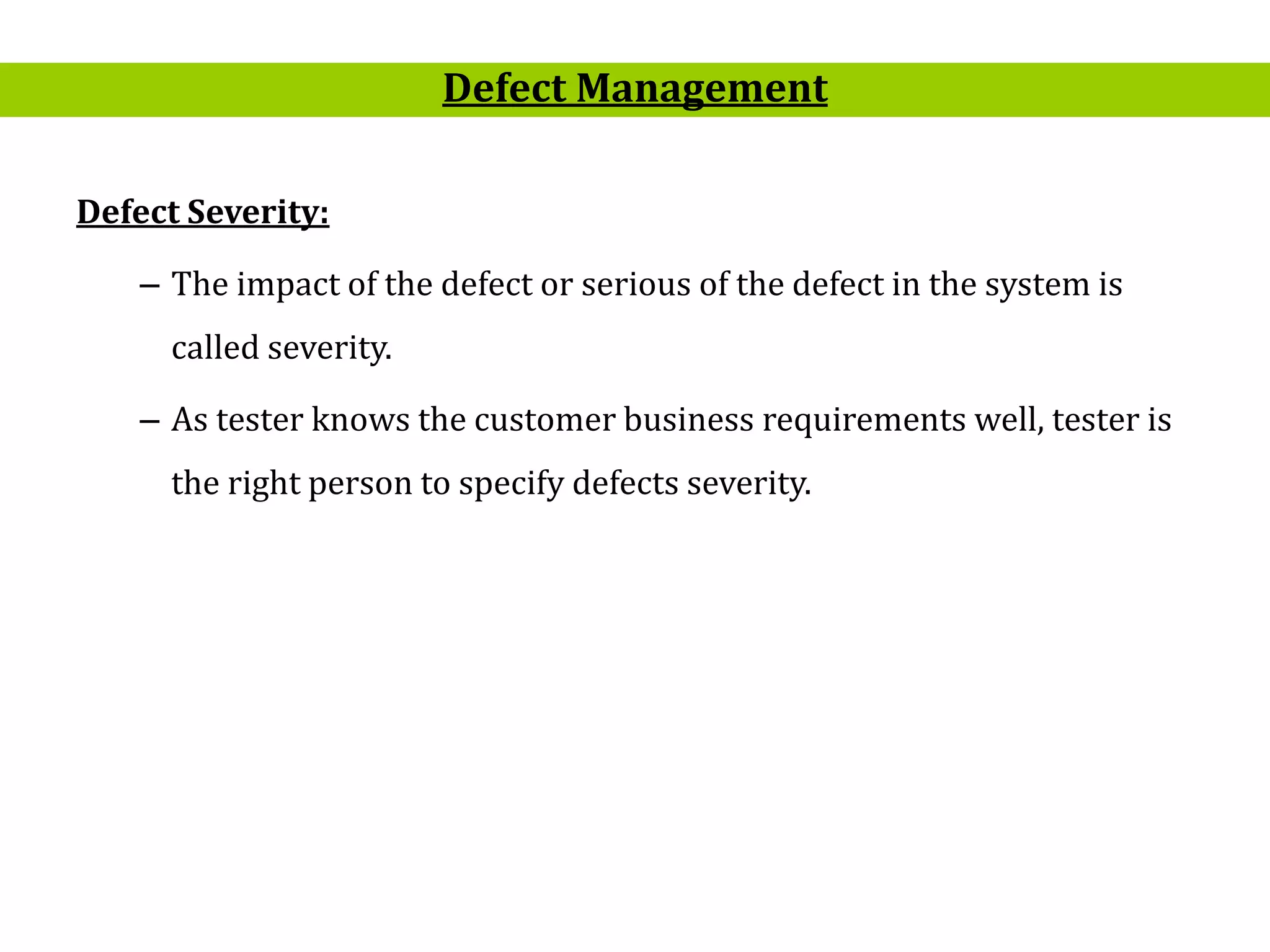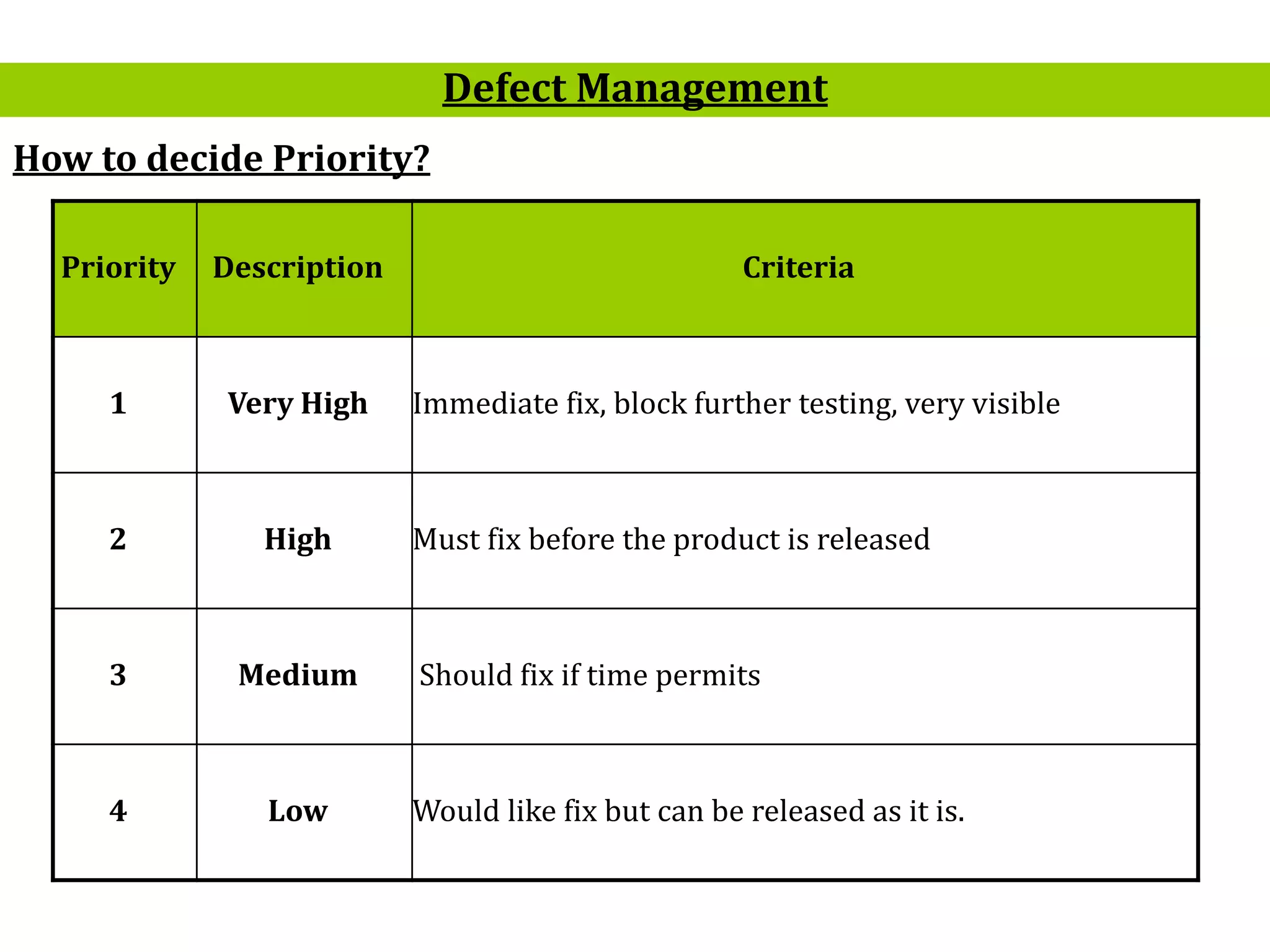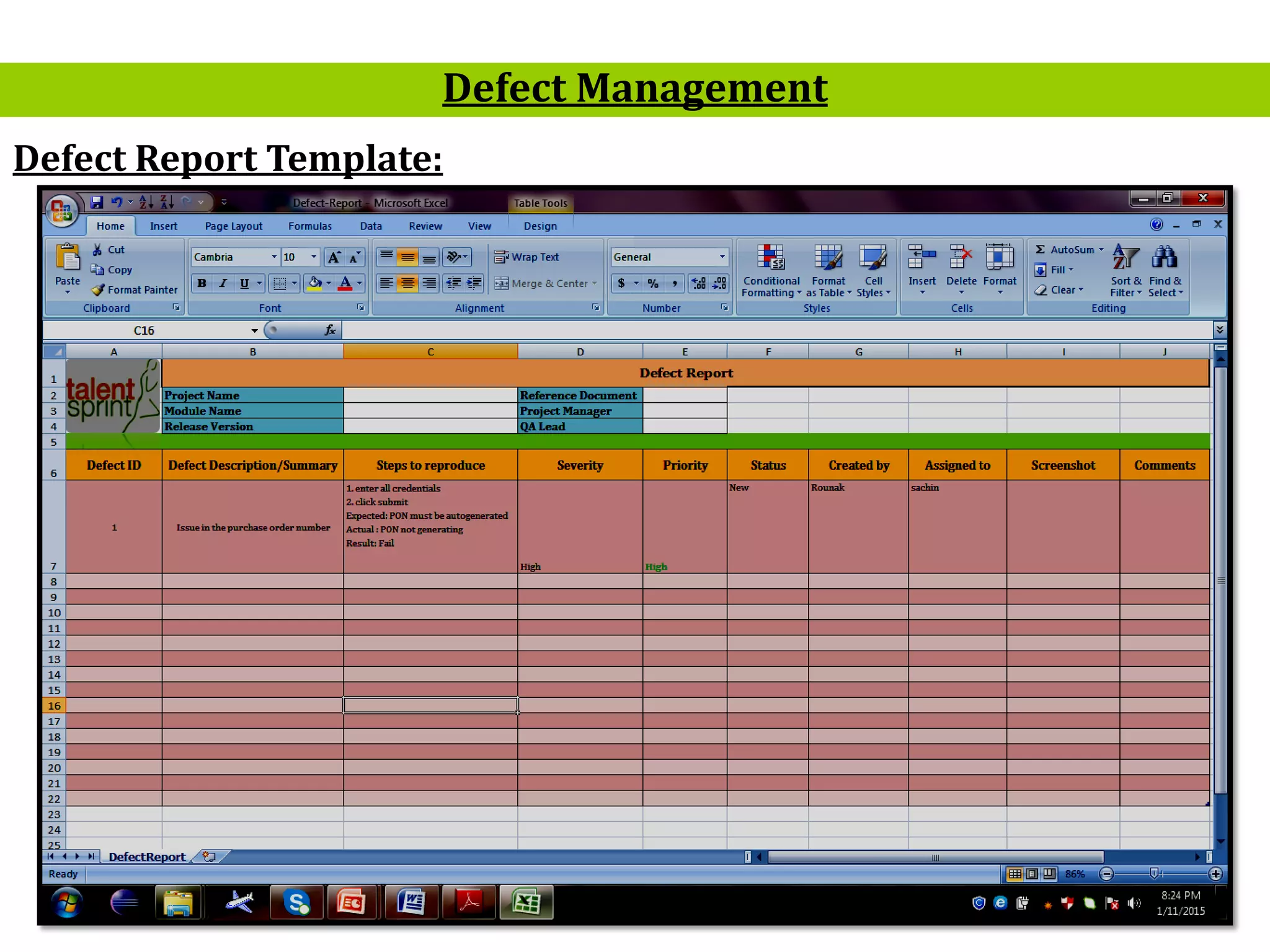The document discusses defect management, defining defects, errors, faults and failures. It describes the defect life cycle from a tester finding an issue and reporting it, to a developer fixing it, and the tester retesting and closing the defect. It also covers determining defect severity and priority, attributes to capture in a defect report, advantages of defect reporting, and tools that can be used for defect tracking.

